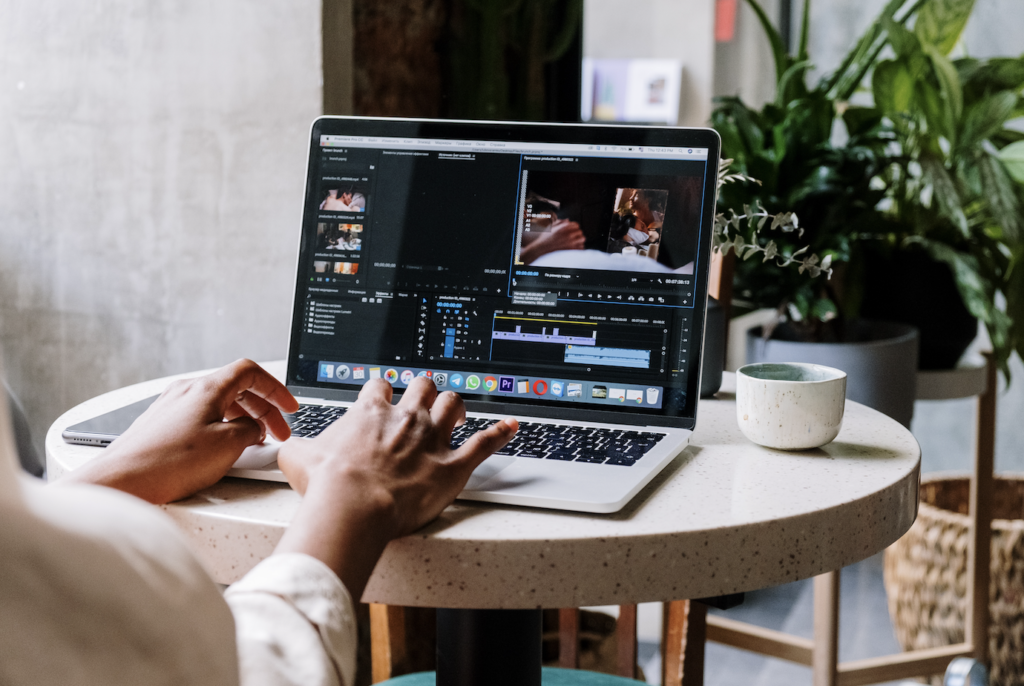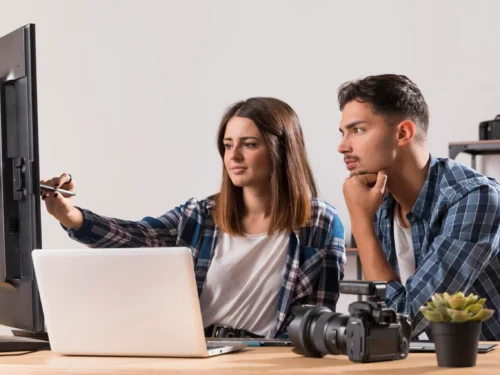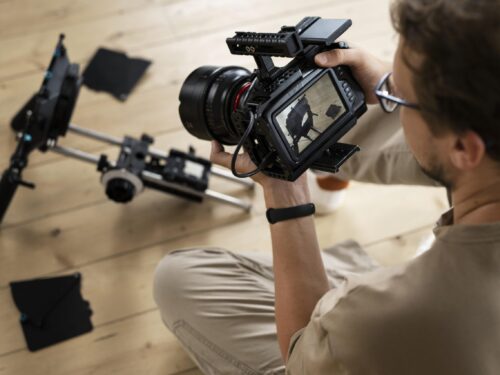What Is A Lower Third And How To Use It Correctly?

If you’ve watched a news program or a documentary, you’ll often find a bit of text with the name of the person that’s on screen, or the location, or just a small piece of information that could help provide context to what you’re seeing. This is a Lower Third, and oftentimes, documentary filmmakers or news programs use this as a visual aid for audiences. In most cases, it’s used to give a name to the person, location, or object, on the screen, but it can also be used for other things, like small snippets of background information, to highlight a certain time period, or as a credit note of the cast and crew members involved in the video. Of course, it can be confusing at times, knowing when and how to use a Lower Third, so we’ll show you how to use them correctly.
1. What’s On Screen
One of the main uses of a Lower Third is to name whatever it is on screen. This can be a person, who is being interviewed, presenting something, or telling their story. It can be a place, like a restaurant, a global landmark, or a natural location. It can even be an object. These Lower Thirds are used, mostly in documentaries, news programs, commercials, corporate videos, and even religious videos. Essentially, they’re used to introduce a person, place, or object.

We Can Help You With Professional Video Editing.
Unlimited Revisions – Whatever changes are needed, send them through and we will Fix them.
Fast Turnaround Time – We are always available to meet the tightest of deadlines when necessary.
Risk-Free Trial – Send your first video editing project to us and if you are not 100% happy with the results we produce, you don’t pay!
2. What Time Is It
Usually, you’ll find these sorts of Lower Thirds in the center of the screen, along with a location. Think of those feature films that use time jumps. You don’t see the passage of time, in the film, but with the use of Lower Thirds, the viewers can tell that a significant amount of time has passed. Sometimes, this can also be represented in full-screen animation, but if it doesn’t fit with the aesthetic of the film, it is always best to use Lower Thirds, to highlight how much time has passed, or the difference in time periods, in your film. Most of the time, Lower Thirds that highlight a time period are used in short films and feature films, especially when the narrative of the film follows several timelines at once.
3. A Fun Fact
Sometimes, some context is needed, in a video. So, using a Lower Third is the best way to add it in, without needing to reshoot your footage. Usually, the information will take up more space in the animation, than a person’s or location’s name, so the writing will be smaller, and a transition effect will be added, to help viewers read it. For example, a “typewriter” effect, along with the sound of typing, will be used to prompt viewers to read the words that appear. This is mostly used by crime documentaries.
4. Credits To The Crew
Lower Thirds can also be used to highlight the names of cast and crew members of a film, particularly if the actors and crew members are highly recognizable. Think of all the a-list Hollywood movies you’ve seen on the big screen. More often than not, after the main title sequence, during the first few minutes of the film, names still pop up on the screen, as a scene develops. Sometimes they can be at the top of the screen but, for the most part, they’re on the lower part of the screen. Thus, they’re known as Lower Thirds as well. Of course, credits to all the actors and crew members, and affiliated personnel are scrolled through, at the end of the film, but for the notable names, they’re highlighted at the beginning of the film, as part of the filmmaking tradition.
How Long Do You Display A Lower Third?
Usually, Lower Thirds don’t last for more than a few seconds on screen. They mostly last anywhere from 3 to 6 seconds, especially if they’re used to introduce names, places, time periods, and objects, or if they’re used to highlight credits to cast and crew members. However, if a Lower Third is needed, to highlight a fact, these can last even up to 10 seconds, depending on how much information they’re giving. Of course, this can be elongated, if transition effects are also added to the Lower Third.
Where Do You Place A Lower Third?
As the name suggests, you place them in the lower third of the screen; essentially, towards the bottom of the screen. Usually, viewers look at the top 2/3 of a screen, in terms of the action on screen, and the lower part of the scene is mostly ignored. Lower Thirds should be non-intrusive to the viewing experience, but they should enhance the information on screen. So, that’s why they’re at the bottom.
However, you can sometimes get Lower Thirds that can be displayed at the top of the screen, or somewhere in the middle, especially if it is a credit for a cast or crew member, or if it is to introduce an interviewee, location, or object. These Lower Thirds, however, need to be placed strategically. So, if the footage is covered by a large piece of furniture, or if there is a lot of “white space” (i.e., the background), then a Lower Third can be placed here.
How Do You Style A Lower Third?
When creating the look of your Lower Thirds, you need to keep the aesthetic of your video in mind. For example, if you’re creating a paranormal investigation documentary, you wouldn’t want to use a Lower Third that’s decorated with flowers and pastels. You would want to use imagery like cobwebs or blood, to highlight the horror aspect of the show.
Similarly, if you’re shooting a corporate video, for company employees, you’d use a sleek look, with blues, blacks, and whites. So, before you use just any design, remember what kind of video you’re editing, and match your Lower Thirds with the style of the edit. Of course, sometimes, you can leave it to be plain white text, but make sure it can still be read, and it is a good contrast against its background. Even though it should be non-intrusive, it should also be readable.
Related Articles:
How Does Colour Grading Affect Video Mood?







